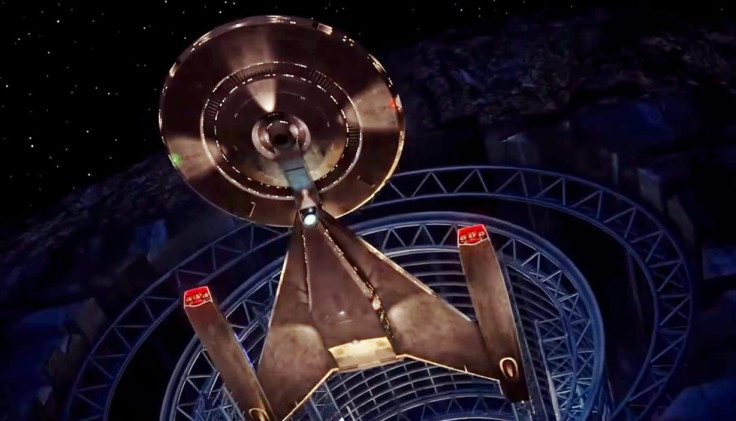In 2161, a united Earth became a founding member of the United Federation of Planets and Starfleet became its exploration and defense service. New ships in the fleet used the NCC designation to indicate a “Naval Construction Contract.” The fleet quickly grew into 4-digit designations, like the Enterprise NC-1701 of the original Star Trek series.
But what about NCC-1031, the designation for the titular ship in the newly announced CBS All Access series Star Trek: Discovery? Is there anything we can learn about the upcoming show from the Discovery’s NCC designation?
Unfortunately, since this is 2016 and we’re receiving fragmentary transmission from the post-World War III future, we don’t know the construction date for every ship in the fleet. All we have is the year of their appearances in various Star Trek series episodes, thanks to Memory Alpha.
The very earliest ships in Starfleet have 3-digit NCC designations, like the Essex NCC-173 of 2161, while later ships have 5-digit designations, like the Defiant-class Sao Paulo, NCC-75633.
Let’s take the ships with the three nearest designation numbers before and after NCC-1031 in the starship database. Designations before NCC-1031 include the NCC-956 Eagle, NCC-1017 Constellation and NCC-1024 Whorfin, while designations immediately after are the NCC-1281 Eagle, NCC-1371 Republic and NCC-1404 Alka-Selsior.
Of these, two appeared in Star Trek VI: The Undiscovered Country , set in 2293, two appeared in original Star Trek episodes set in 2254 (“Court Martial”) and 2267 (“The Doomsday Machine”), while the remaining two appeared in Star Trek: The Next Generation episodes set in the 2360s.
This is an impressive span of time, suggesting at first glance that Star Trek: Discovery could reasonably take place anytime between the Star Trek original series era and The Next Generation era over a century later.
That doesn’t narrow down our parameters all that much. But look a little closer and the lens narrows. One, the Alka-Selsior, was decommissioned and in storage, a relic of an earlier era. The other, the USS Robert Louis Stevenson, is nothing more than a name on a computer screen in the TNG episode “Conspiracy.”
Excluding the Robert Louis Stevenson (which could have been an antique used to shepherd tourists back and forth from the moon for all we know), the NCC designations nearest in the timeline to the USS Discovery paint an intriguing picture of Star Trek: Discovery’s likely setting.
Bryan Fuller, showrunner of the upcoming Star Trek series, confirmed that Discovery would be set in the Prime Universe, rather than the rebooted continuity broken off the old timeline in 2009’s Star Trek reboot.
Fuller also denied rumors that Discovery would be set in the years after the signing of the peace treaty between the United Federation of Planets and the Klingon Empire (Star Trek VI: The Undiscovered Country covers the lead-up to the signing of the landmark Khitomer Accords peace treaty), telling Moviefone, “I’ve read that we’re before Next Generation, after Undiscovered Country, which is false.”
Combine Fuller’s words with the NCC designation and we’re left with a much narrower window. Star Trek: Discovery must be set between 2161 and 2293. For context, the original Enterprise, NCC-1701, flew from the 2250s until 2285, with its famous five-year mission taking place between 2265 and 2270.
The NCC designation for the USS Discovery reveals more than the Star Trek Comic-Con panel announced. Star Trek: Discovery will either take place before or contemporaneous with Star Trek: The Original Series.


















